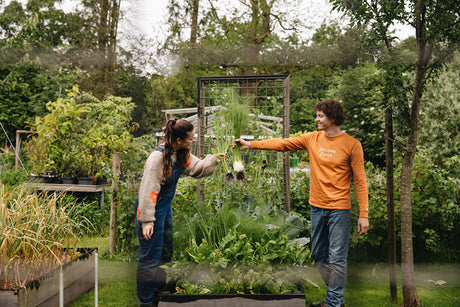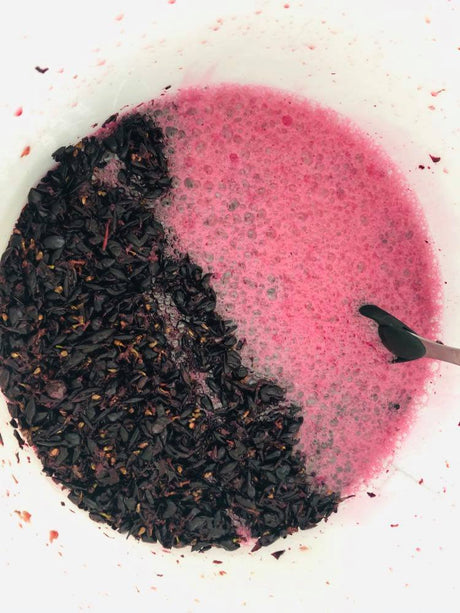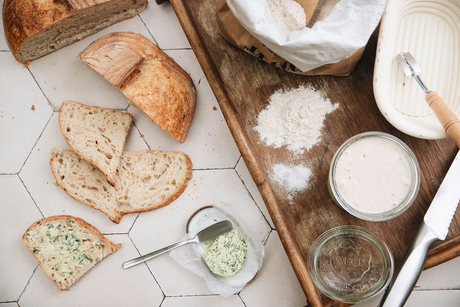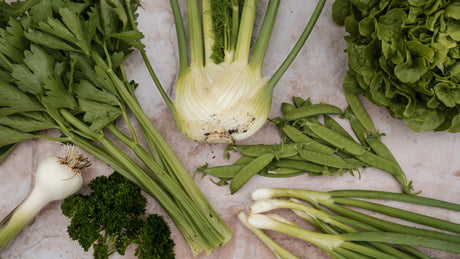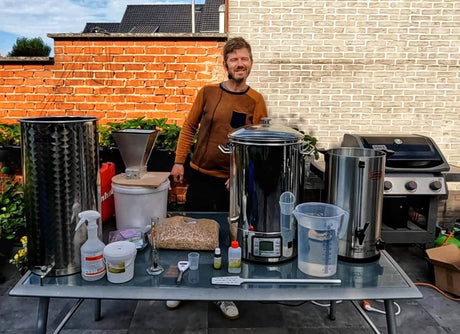Lavender cuttings - Easily bring Provence into your home
Can you have enough lavender? My answer is a resounding "No!!!". The scent, the color, the bees buzzing in it and the way they sway in the breeze... indispensable. The good news is: Propagating lavender cuttings is easy as long as you do it the right way and at the right time. You don't need propagators or complicated growing systems and even a beginner gardener can get started.
Lavender is also a paradise for bees, the pollinators of our vegetable garden, for over a month. After the summer raspberries on which the bees are already active very early, the next playground for the bees is my lavender. After the lavender, the first flowers bloom in the garden. This way the bees have a very long season.
Ready to learn more about lavender cuttings?


There are 2 ways to propagate lavender cuttings
There are two ways to propagate lavender. You can do it with cuttings from the soft wood that you have on the early bendable shoots. These are the bright green shoots that I mean, not the flower shoots that you see later in the spring. You can also take cuttings from the hard wood , the woody shoots at the bottom of the plant. These have a slightly darker green leaf. These shoots are stiffer and can crack when you bend them.Lavender cuttings from softwood
The best way of the two? Everything depends on the time of day you are reading this article. Softwood cuttings are easy to cut in early spring. They are abundant and you can harvest the cuttings without damaging the plants. They root very quickly but the cuttings are less qualitative and reliable than hardwood cuttings.Using Hardwood to Propagate Lavender
Where you only cut softwood cuttings in the spring, you can take hardwood cuttings in both spring and autumn. I would advise everyone to take hardwood cuttings. It is also difficult to take softwood cuttings that have not yet formed a flower. Cuttings that form a flower put all their energy into flowering and not into making roots. (photo: getbusygardening.com )Lavender cuttings - getting started
Whatever wood you cut, you should always ensure a good, sharp cut. A good pair of secateurs or a sharp knife is very important. Choose cuttings with a healthy colour without buds or shoots. Cut cuttings of 8 to 12 cm long. Cut just below an internode. An internode is the place where leaves emerge from the branch. Remove all leaves in the bottom 4 to 6 cm. If all is well, you should now have half a bare branch and half a vegetated branch. Using a sharp knife, scrape the scalp off one side of the bare stem. Fill a small pot with a mix of 50% perlite or vermiculite and 50% sowing and cutting soil, a P7 pot seems fine to me. You can dip the lavender cuttings in cutting powder for even better rooting and less risk of rot. But generally speaking lavender cuttings root quite well so without cutting powder it can also work. Place the stripped and cut part of your lavender cutting (with or without rooting powder) in your P7 pot and press the soil. Place your cutting pots in a propagator or cover them with a dome. This will increase the humidity a little. Your cuttings are ready to root.How to care for your lavender cuttings
Softwood cuttings of lavender will root in two to four weeks. Hardwood cuttings will take a little longer. Check your cuttings after two weeks by giving them a gentle tug. If you feel resistance, your cutting has developed roots. When the cutting has developed roots, you can remove the dome or remove the pots from the propagator . Place your cuttings in a sunny spot (garden shed or greenhouse ) and check regularly if they need water. Place your pots in a base and water them, this will stimulate the roots. Give your cuttings 1/4 of the dose of liquid fertilizer in the water every week for 2 to 4 weeks. Then place them in the open ground or in a larger pot (2 to 5 liters) to let them grow further. Use potting soil for vegetable gardens or universal potting soil in the larger pot. This potting soil has certainly 2 months of nutrition for the plant during the growing season and is sufficient during the winter when the plant has stopped growing. Finally Lavender cuttings are quite easy and are more successful than growing lavender from seed. Lavender seeds are also available in our webshop and are similar to sowing perennial herbs (rosemary, thyme, sage, ...). Lavender cuttings also give you the advantage that you have the same genetic plant as the mother plant. So find plants for your cuttings that look best to you. If you found this article valuable, please share it with your gardening friends using the social media buttons. You can also give our site a boost by purchasing your gardening supplies in our webshop . I wish you lots of waving and wonderfully scented lavender. Greetings, Tom Myself in my vegetable garden



